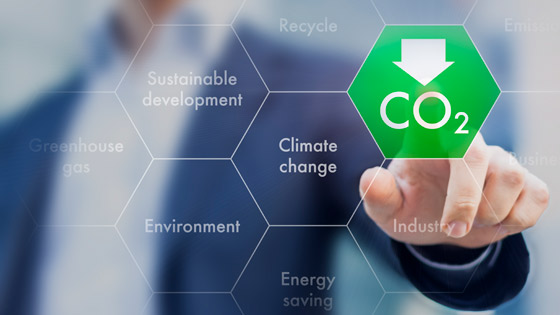The top 10 countries of global carbon dioxide emissions in 2021 are China, the United States, India, Russia, Japan, Iran, Germany, South Korea, Saudi Arabia, and Indonesia. Among them, the carbon emissions of China and India are 10.523 billion tons and 2.553 billion tons respectively; the carbon emissions of the United States are 2.553 billion tons, which is the highest carbon emissions per capita. From the global carbon dioxide emissions share, China’s carbon emissions are the first in the world, and China, the United States and India account for more than half of the global carbon emissions.

In terms of carbon emissions data, the countries with high carbon emissions are all located in the Asia-Pacific region, and carbon emissions in the Asia-Pacific region are on an upward trend. 2021 carbon emissions in the Asia-Pacific region will be 17.735 billion tons, up 5.3% from 2020, accounting for 52% of the total. North America, Central and South America, and Europe account for 17%, 4%, and 11% of carbon emissions respectively. North America, Central and South America are on a downward trend, with carbon emissions of 5.602 billion tons and 1.213 billion tons in 2021, respectively.
China and India developed their industries later than the U.S. and still need to consume large amounts of coal in the course of their economic development, so carbon emissions are still growing. China is aiming to peak its carbon emissions by 2030 and working toward carbon neutrality by 2060. India pledged at the UN climate summit in Glasgow to achieve net zero carbon emissions by 2070. The U.S. has gradually adjusted its energy mix to reach peak carbon as early as 2007, and carbon emissions have entered a downward spiral.
Reducing carbon emissions can curb the global greenhouse effect and slow down the problem of seawater acidification. Countries around the world have been accelerating their research and use of renewable and green energy to promote a shift toward a green economy and sustainable economic development. CCUS technologies are gaining momentum in Asia-Pacific countries as the global energy transition continues. China has included large-scale CCUS projects in its 14th Five-Year Plan for the first time in 2022; Japan has launched an Asian CCUS network to support CCUS projects and promote knowledge sharing, building on its existing co-credit facility; Australia has announced regulatory reforms to provide CCUS projects. Australia announced regulatory reforms to provide financial support for CCUS projects and gathering centers, including The first financial incentives to promote the establishment of a dedicated carbon trading market in the Asia-Pacific region.
Waste pyrolysis technology developed by Niutech Environmental Technology Corporation has realized harmless treatment and recycling of organic waste through continuous innovation. The industrial continuous organic waste pyrolysis plant can process organic waste such as waste plastics, waste tires, industrial sludge, hazardous waste and solid waste, and the outputs fully meet the requirements of carbon emission. At present, the equipment has been applied in China, Germany, USA, UK, Denmark, Brazil, Hungary, Turkey, Estonia, Iraq, India, Thailand and other countries and regions, which is a cutting-edge technology to reduce carbon emission and realize circular economy.

Email: contact@niutech.com Tel: 86 531 86196301

yes i need help in zambia